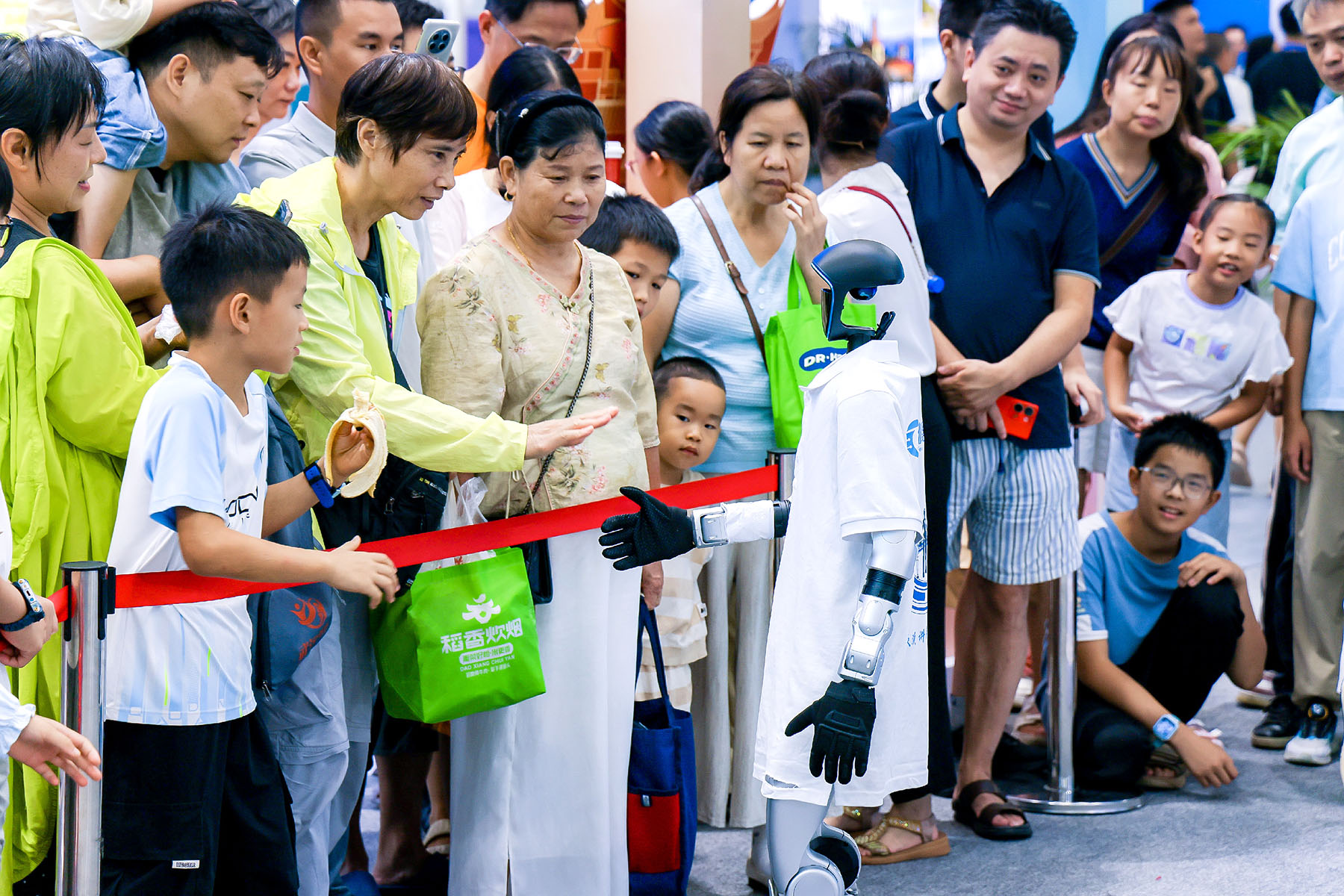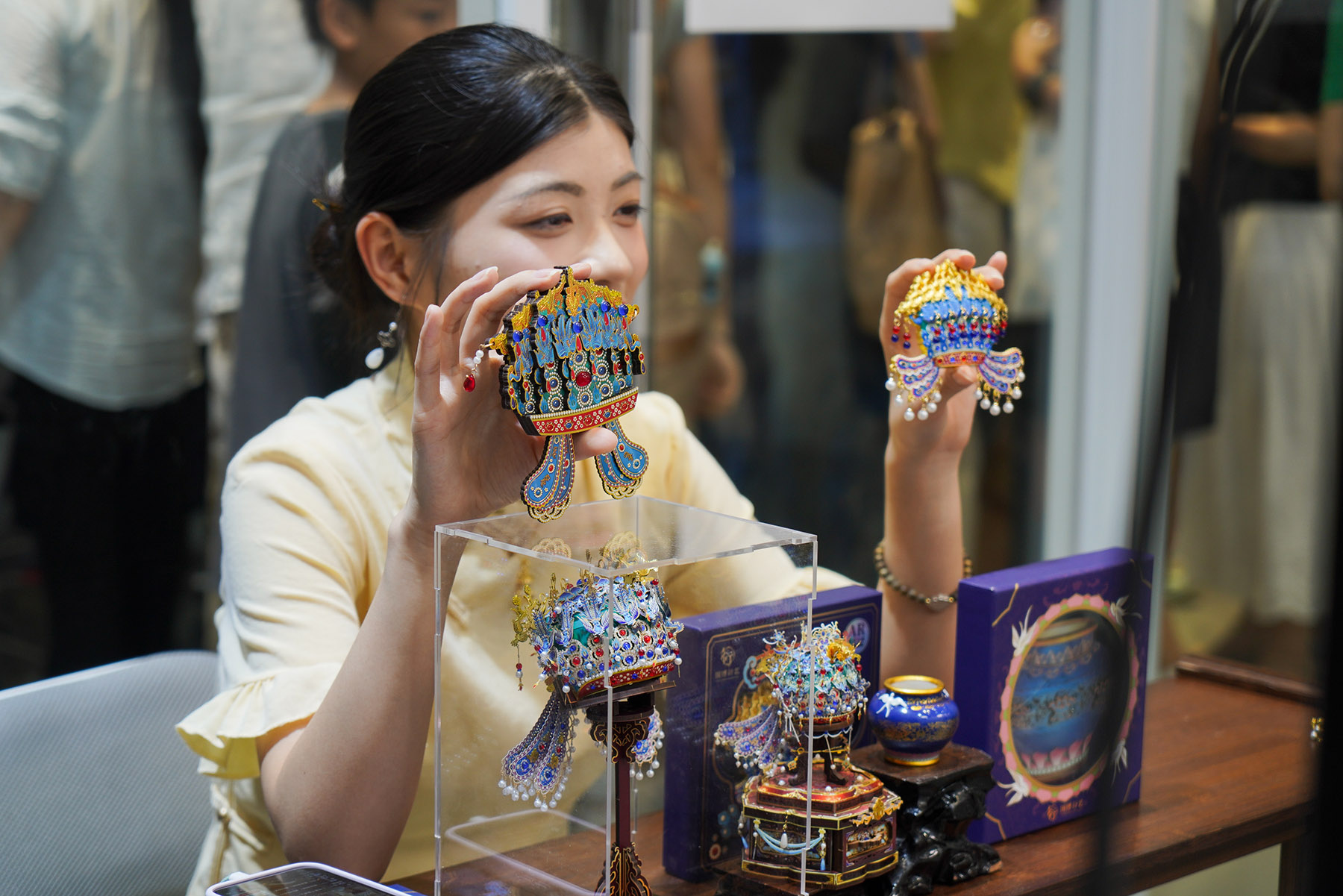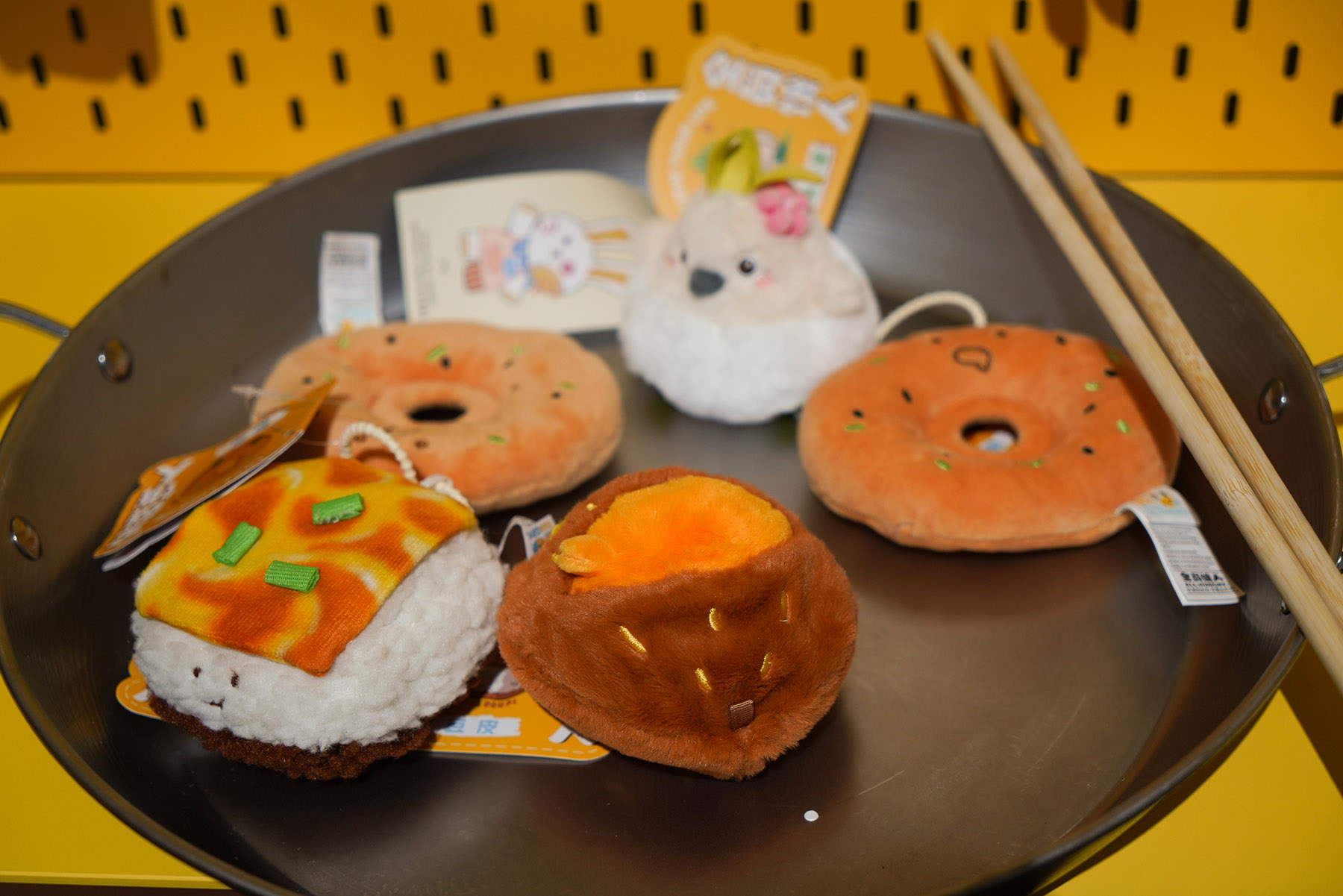Robots play drums and dance, brew coffee, turning an industry expo into a stage where artificial intelligence and heritage converge, Xu Lin reports in Wuhan.

Humanoid robots in traditional costumes perform synchronized dances alongside human performers against a backdrop of dynamic large-screen visuals, attracting big crowds.
Elsewhere, a robot plays the drums to classical Chinese songs, robotic baristas make coffee and robotic dogs take a stroll, creating a futuristic atmosphere.
These innovations took center stage at the 2025 China Culture and Tourism Industries Expo, where technology met culture to reimagine the future of tourism.
The event, hosted by the Ministry of Culture and Tourism from Sept 12 to last Sunday in Wuhan, Central China's Hubei province, carried the theme "deepening integration of culture and tourism, enjoying a better life".
The expo attracted over 225,000 visits, with more than 2,000 domestic exhibitors, including tourism bureaus and scenic areas.
Statistics show that half of the visitors were from outside Wuhan. According to travel agency Trip.com Group, hotel bookings in the city grew by 43.5 percent year-on-year during the three-day event, with booking values rising by 42.9 percent.

Business was brisk. Five cultural and tourism industry negotiation events facilitated cooperative deals worth 810 million yuan ($113.78 million), while a centralized signing ceremony for cultural and tourism projects secured investments totaling 23.28 billion yuan. A total of 26 pairs of overseas and domestic travel agencies signed contracts on-site, with a transaction volume of 82 million yuan. On-site transactions of cultural products and tourism commodities at the expo reached 170 million yuan.
"The expo presents the diverse achievements of the culture and tourism industries and serves as a vivid example of their integrated development in the new era," says Duan Qiang, president of the China Tourism Association.
He adds that the association is committed to working with technology companies and cultural tourism institutions on innovative applications such as digital museums and AI-guided tours.
Robotics was a star attraction. Ren Yutong, executive president of the Guangdong Robotics Association, shared the applications of robots in his speech at the expo's forums.
"Robots are playing important roles in stage shows, immersive exhibitions and theme parks. They can adapt their interactions to the circumstances, giving tourists personalized experiences," Ren says.
Robots, he explains, could also ease staff shortages in scenic areas by handling interpretation services and information inquiries. Tourists can also use robotic exoskeletons powered by artificial intelligence to climb mountains.

Virtual reality also offers new ways to explore. Wearing headsets, visitors could experience rowing on Tianjin's Haihe River or strolling on Wudang Mountain in Shiyan, Hubei.
He estimates that various interactive robot experiences and themed activities will serve as a catalyst for more varied cultural and tourism consumption. Robots can act as tour guides and provide customized travel services in the future, while also providing essential accessibility support to travelers with physical challenges.
Alongside the technological displays, audiences watched colorful performances, joined intangible cultural heritage workshops, sampled delicious regional snacks, and bought cultural and creative products, making for an enriching experience.
The best-selling items — such as a refrigerator magnet shaped like a phoenix coronet, a popular piece from the National Museum of China's collection — proved especially popular.
"The crown magnet is a classic example of the explicit expression of traditional Chinese aesthetics in the contemporary era. Its viral popularity may seem accidental, but it is an inevitable outcome of the public's booming interest in museums, cultural heritage and traditional culture," says Liao Fei, who's in charge of the museum's cultural and creative products.
He points out that nowadays, visitors' consumption behavior is more about seeking emotional appeal and satisfying spiritual needs.
"The research and development of cultural and creative products is exploring the connection between ancient and modern cultures, and integrating traditional aesthetics with contemporary aesthetic demands for innovative design," he says.

Other best-sellers included plush toys modeled after regional snacks and cultural artifacts. A toy shaped like nang, a traditional flatbread from the Xinjiang Uygur autonomous region, became a hit among young visitors eager to attach it to their bags. Stock quickly ran out despite repeated restocking.
Domestic brands also showcased "China-chic" products. Shenzhen Art Toys Research Co and its partner, Dongguan-based brand Piececool, displayed miniature models of phoenix crowns and bridal sedan chairs.
Made of thin etched metal plates, the pieces are assembled like a blend of paper-cutting and building blocks. "Many visitors told us these toys feel both distinctive and trendy," says Rao Zhengang, design director of the Shenzhen company. "Some items sold out on the spot."
The expo also highlighted China's growing low-altitude economy. Wuhan Fosenix General Aviation Co, based in the capital city of Hubei, unveiled its Sparrow-X2 electric vertical takeoff and landing aircraft. It has a passenger capacity of six people, a maximum range of 1,200 kilometers and a cruising speed of 200 to 300 km/h.
"Low-altitude aviation can boost accessibility between scenic spots, attract more tourists, and provide emergency services for remote areas," says Chen Zhaoyan, founder of the aviation company.
ALSO READ: Country's low-altitude economy aims sky high
The expo's 40,000-square-meter outdoor zone showcased 20 themed floats, including those representing cities across the province. Crowds gathered to watch operas and traditional dances, snapping photos with the floats.
Performers from Universal Beijing Resort added to the excitement with popular characters such as the Minions.
Nearly 1,000 domestic and international performers will join the 20 floats to parade through Wuhan during the upcoming Mid-Autumn Festival and National Day holidays, an event expected to further boost the city's tourism sector.
Contact the writer at xulin@chinadaily.com.cn


